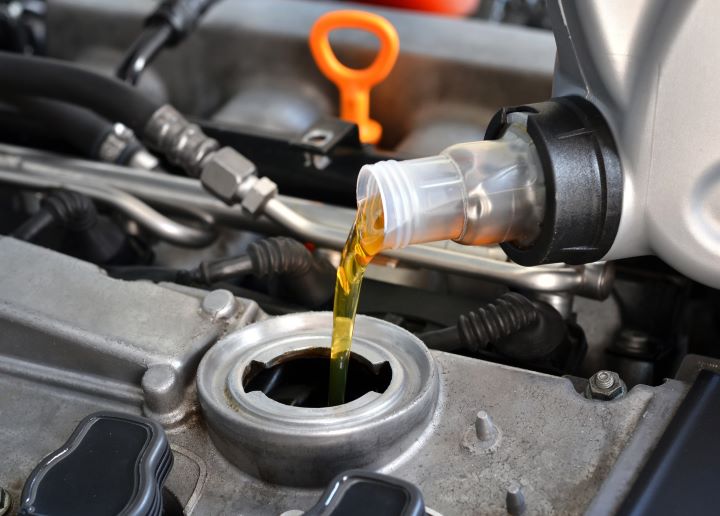Oil Change Guide for Your Vehicle
An oil change is a routine service that has a direct effect on engine performance, fuel efficiency, and long-term vehicle reliability. Regular oil replacement keeps contaminants from circulating, restores lubrication properties, and helps maintain proper engine temperatures. Whether you perform the service yourself or use a professional, understanding when and how to change oil improves safety and can extend the life of your car.

Car: When should you schedule an oil change?
Most manufacturers give guidance for oil change intervals based on mileage and time, often expressed in service schedules. Modern cars with synthetic oil may have longer intervals than older vehicles that use conventional oil. Factors that affect timing include driving habits (frequent short trips, towing, or stop-and-go traffic), local climate, and whether the engine operates under heavy load. Check your owner’s manual for manufacturer recommendations and use those as the starting point for scheduling service.
Many drivers also rely on engine oil monitoring systems that estimate oil life using sensor data and driving patterns. These systems provide a useful, vehicle-specific prompt but should be used alongside manual checks. Visible signs that an oil change may be needed include dark, gritty oil on the dipstick, low oil level, or dashboard oil-pressure warnings. Address these signs promptly to avoid engine wear or damage.
Oil: What types and viscosity ratings matter?
Engine oil comes in several categories: conventional, synthetic blend, and full synthetic, each offering different protection characteristics. Viscosity ratings, such as 5W-30 or 10W-40, describe how oil flows at low and high temperatures. Manufacturer specifications indicate the correct viscosity and oil standard (for example, API or ACEA approvals) that match engine design and operating conditions. Using the recommended viscosity helps maintain proper lubrication, reduce friction, and support fuel efficiency.
Additives in oil provide detergency, anti-wear protection, and anti-foaming properties. These formulations address specific engine needs, so changing to an incompatible oil type can alter performance or warranty coverage. When selecting oil, prioritize the specifications listed in the vehicle manual and consider climate — colder regions generally require oils with better low-temperature flow, while hot climates may benefit from oils with higher high-temperature stability.
Engine: How does oil protect internal parts?
Engine oil forms a thin lubricating film between moving parts such as pistons, bearings, and camshafts, reducing metal-to-metal contact and wear. It also helps carry heat away from critical components, supports hydraulic systems like variable valve timing, and suspends combustion byproducts and tiny particles until they are removed during an oil change. Over time, oil degrades — additives are consumed and contaminants accumulate — which reduces its protective qualities.
If oil is not changed regularly, sludge and varnish can form, restricting oil passages and diminishing lubrication. Low oil pressure or excessive engine noise can indicate insufficient lubrication or heavy contamination. Routine oil changes remove degraded oil and contaminants, replenish protective additives, and restore the film strength necessary to protect the engine under normal operating conditions.
Vehicle: Should you do an oil change yourself or use local services?
DIY oil changes can save money and are relatively straightforward for many vehicles: draining the old oil, replacing the filter, and adding the correct type and amount of oil. Safety, proper disposal of used oil, and correct torque on drain plugs are important considerations. Some modern vehicles have hard-to-reach filters or require specific procedures, which can complicate at-home jobs. Local services and repair shops offer convenience, proper disposal, and sometimes multi-point inspections that can identify other maintenance needs.
When choosing local services, compare what’s included (filter replacement, platform inspection, fluid top-offs) and confirm the correct oil type is used. Keep records of service regardless of who performs the change; consistent maintenance documentation supports resale value and makes it easier to follow recommended intervals for future work.
Maintenance: How to track oil changes and related upkeep
Maintaining a clear schedule for oil changes improves long-term reliability. Options include following the manufacturer’s service intervals, using an oil-change sticker, logging dates and mileage in a maintenance booklet or app, and paying attention to oil-change reminders from your vehicle’s onboard system. Combine oil changes with other routine checks — tire condition, brake inspection, and air filter replacement — to keep maintenance efforts efficient.
Regular inspections between oil changes are useful: check oil level with the dipstick, look for leaks under the vehicle, and note any unusual smells or smoke. Keep records of oil type and quantity used at each service. This record-keeping helps identify patterns, such as faster-than-normal oil consumption, which may indicate leaks or engine wear that requires further diagnostics.
Conclusion
An oil change is a simple but essential component of vehicle maintenance that preserves engine health, supports performance, and reduces the risk of costly repairs. Understanding recommended intervals, choosing the correct oil type and viscosity, and keeping accurate maintenance records will help you and your car perform reliably over time. Regular attention to oil condition and service needs helps ensure that the engine continues to operate as designed.





